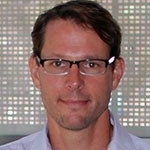Spectrum: Autism Research News
Jonathan Sebat on autism and schizophrenia genetics

Jonathan Sebat is professor of psychiatry and cellular and molecular medicine at the University of California, San Diego, and chief of the Beyster Center for Molecular Genomics of Neuropsychiatric Diseases.
On 27 May, Jonathan Sebat discussed similarities and differences between autism and schizophrenia at the genetic level. He is associate professor of psychiatry and cellular and molecular medicine at the University of California, San Diego.
Small duplications in a chromosomal region known as 16p11.2 increase the risk of schizophrenia, whereas deletions in this same region are linked to autism. Findings from the last five years suggest that some of the very genetic variations that lead to autism may confer risk for — or in some cases protection from — schizophrenia.
Taken together, these results raise the question of whether autism and schizophrenia are two sides of the same genomic coin. During this webinar, Sebat examined both disorders and dissected their genetic similarities and differences.
You can watch a complete replay of the webinar above.
Use the comments section below to submit questions we didn’t have time to discuss during the Q&A session or to pose follow-up questions for Sebat.
Check out the SFARI Webinar Series for a listing of future sessions.
By joining the discussion, you agree to our privacy policy.